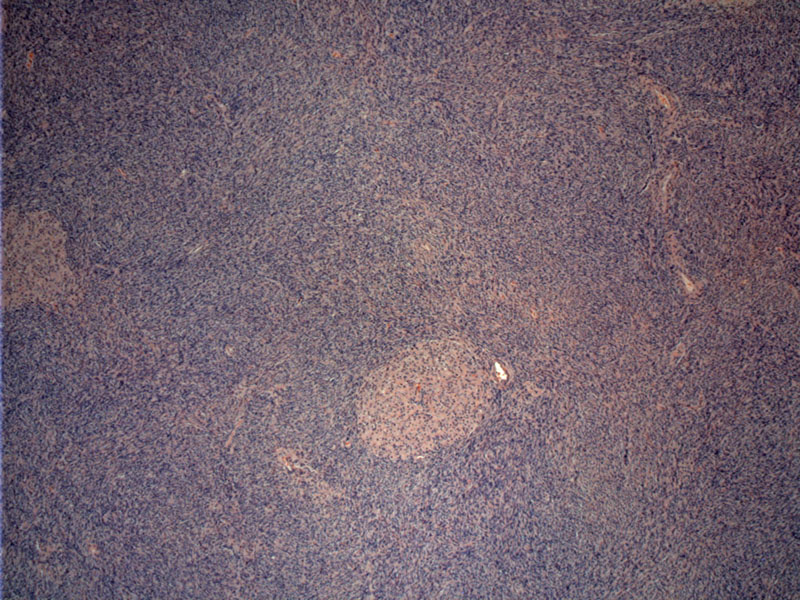

Enlargement of the ovary is largely due to stromal overgrowth as seen here. The hyperplastic stroma is microscopically the same as that of cortical stromal hyperplasia. Islands of luteinized cells (light pink) are scattered throughout.
Variably sized aggregates of luteinized cells are seen. Nuclei are inconspicuous and the cells may be overlooked in some cases.
Nests of luteinized cells are seen as pink aggregates of cells with abundant cytoplasm and centrally placed round nuclei with small nucleoli.
When stromal cells proliferate and expand the cortex and medulla of the ovary, it is defined as stromal hyperplasia. When luteinized thecal cells are present, it is termed stromal hyperthecosis. It is thought that these two entities exist as part of a continuum, as stromal hyperplasia usually accompanies stromal hyperthecosis, and luteinized cells are found at least focally in stromal hyperplasia.1,2
In premenopausal women, stromal hyperthecosis may lead to virilization. There is also an association with a PCOS-like syndrome including obesity, hypertension and acanthosis nigricans. Rarely, Meigs' syndrome (pleural effusion, ascites) has been described with stromal hyperthecosis. In post-menopausal women, stromal hyperthecosis is usually asymptomatic, although there are reports of virilization in elderly women.1
Stromal hyperplasia and hyperthecosis may be found in up to 1/3 of women in their 60s and 70s. In post-menopausal women, SH is usually asymptomatic. In the subset of younger pre-menopausal women with stromal hyperthecosis, the clinical presentation may be similar to that seen in PCOS. Lab studies may reveal elevated testosterone levels.1,2
1 Crum CP, Lee KR. Diagnostic Gynecologic and Obstetric Pathology. Philadelphia, PA: Elsevier; 2006: 739-40.
2 Nucci MR, Oliva Esther. Gynecologic Pathology: Foundations in Diagnostic Pathology. Philadelphia, PA: Elsevier: 2009: 373-4.